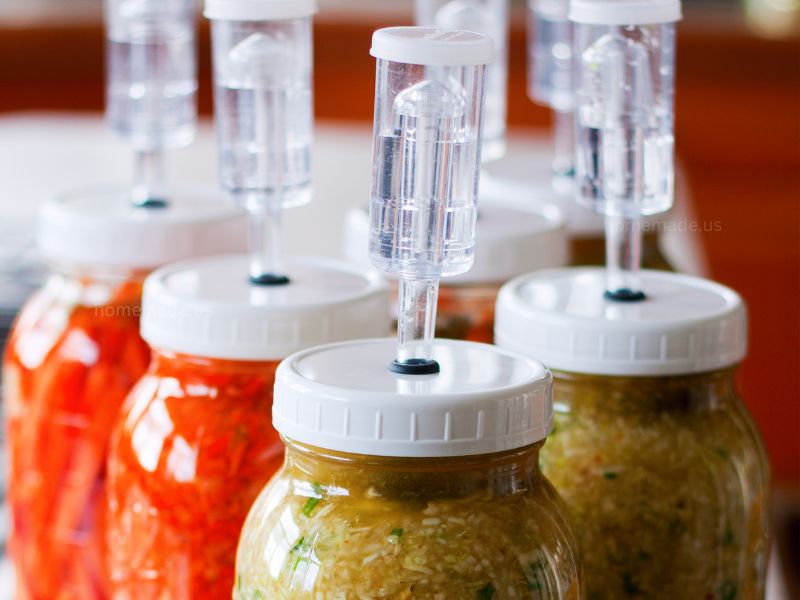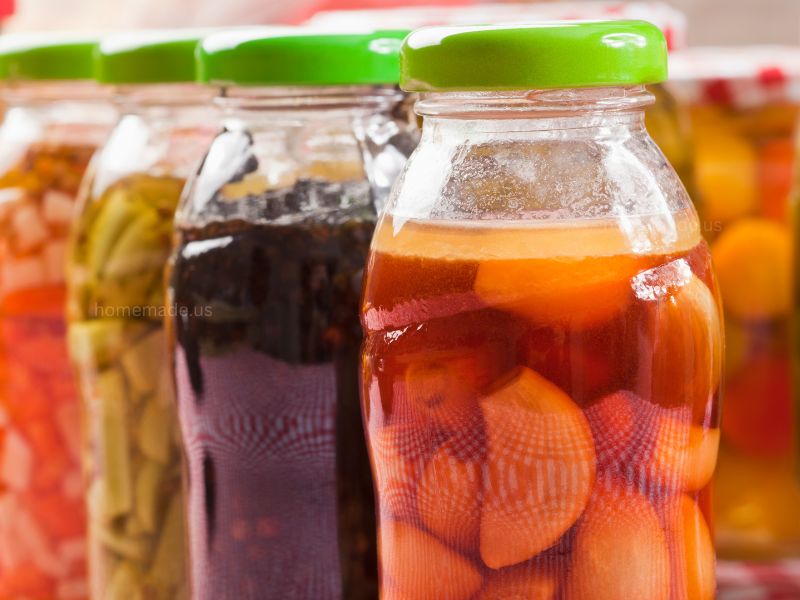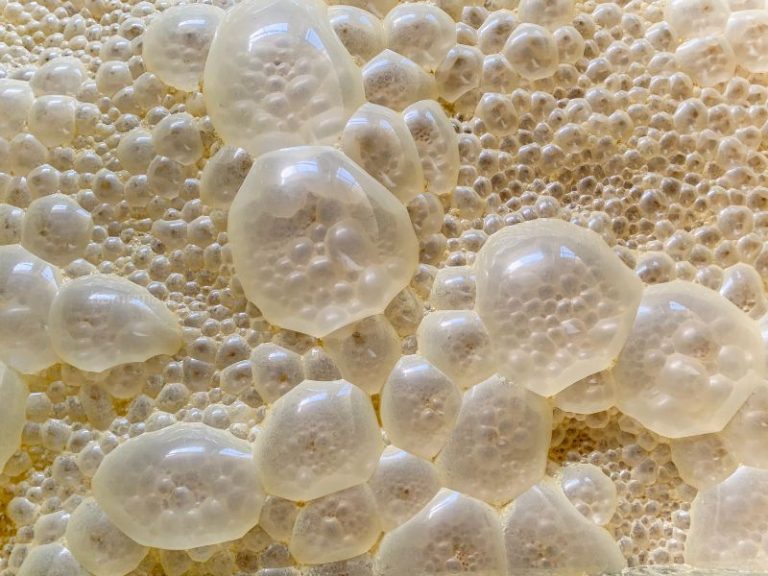As a food enthusiast, I have always been fascinated by the process of fermentation. It is a traditional method of food preservation that has been used for centuries to enhance the flavor, texture, and nutritional value of various foods. Lactic acid fermentation is one such type of fermentation that is widely used in the production of several staple foods such as yogurt, cheese, and pickles. In this comprehensive guide, we will explore the intricacies of lactic acid fermentation, its benefits, and how you can create lacto-fermented foods at home.
Introduction to Lactic Acid Fermentation and its History
Lactic acid fermentation is a process that converts sugars into lactic acid through the action of lactic acid bacteria. This type of fermentation is anaerobic, which means it occurs in the absence of oxygen. The process was first discovered in the early 19th century by French chemist Louis Pasteur, who observed that lactic acid bacteria were responsible for the souring of milk.
The use of lactic acid fermentation has been prevalent in many cultures worldwide for centuries. For example, in Japan, lactic acid fermentation is used to produce miso, soy sauce, and sake. In Europe, it is used to produce sauerkraut, sourdough bread, and cheese. In Africa, it is used to produce sorghum beer and other fermented foods.
Understanding the Process of Lactic Acid Fermentation and How it Works
Lactic acid fermentation occurs when lactic acid bacteria consume sugars present in food and convert them into lactic acid. The process begins by creating an environment that is conducive to the growth of lactic acid bacteria. This can be achieved by adding salt to food, which inhibits the growth of harmful bacteria while promoting the growth of lactic acid bacteria.
Once the environment is set, lactic acid bacteria begin to consume the sugars present in food, producing lactic acid as a byproduct. The lactic acid produced lowers the pH of the food, making it more acidic and creating an environment that is unfavorable to the growth of harmful bacteria. The acidity also lends a tangy flavor to the food, which is prized in many cultures.
The Role of Lactic Acid Bacteria in the Fermentation Process
Lactic acid bacteria are the key players in lactic acid fermentation. There are several strains of lactic acid bacteria, each with its unique characteristics and metabolic pathways. These bacteria are naturally present in many foods, and their growth can be encouraged by creating the right conditions.
The bacteria consume sugars present in food and convert them into lactic acid, which acts as a natural preservative. The lactic acid produced by the bacteria lowers the pH of the food, creating an environment that is inhospitable for the growth of harmful bacteria. The bacteria also produce enzymes that break down complex sugars and proteins, making them more accessible to our digestive system.

The Benefits of Consuming Lacto-Fermented Foods
Lacto-fermented foods are rich in beneficial bacteria that promote gut health. These bacteria help to maintain the balance of gut flora, which is essential for overall health and well-being. Lacto-fermented foods are also rich in vitamins and minerals, making them a nutritious addition to any diet.
Consuming lacto-fermented foods has been linked to several health benefits, including improved digestion, enhanced immunity, and reduced inflammation. These foods are also believed to help in the prevention of several chronic diseases, including diabetes, heart disease, and cancer.
Characteristics of Lactic Acid Bacteria and Their Metabolism
Now it’s time to get a little bit geeky to help explain how the bacteria does its job.
Lactic acid bacteria are a diverse group of bacteria that are characterized by their ability to produce lactic acid. Lacto-fermentation is a process that uses certain types of bacteria to break down sugars in food, producing lactic acid. These bacteria are commonly called “gram-positive” because they can be stained with a dye called crystal violet. They are also able to produce energy both with and without oxygen, which makes them very versatile. This process is used to preserve and flavor many types of food, including pickles, sauerkraut, and yogurt.
The metabolism of lactic acid bacteria is highly dependent on the availability of sugars. These bacteria prefer simple sugars such as glucose and fructose and can metabolize these sugars through the Embden-Meyerhof pathway.
The Embden-Meyerhof pathway, also known as glycolysis, is a metabolic pathway that is common to almost all living cells, including lactic acid bacteria that are involved in food fermentation. It is a series of reactions that break down glucose (a simple sugar) into pyruvate (a molecule made up of three carbon atoms). During this process, energy is released, which is used to produce ATP (adenosine triphosphate), a molecule that provides energy for cellular processes.
In the context of food fermentation, the Embden-Meyerhof pathway is important because it is the primary way that lactic acid bacteria break down sugars to produce lactic acid. Lactic acid is a key component of the sour flavor that is characteristic of many fermented foods, such as sauerkraut, pickles, and yogurt. The pathway also produces other compounds, such as acetaldehyde, which contribute to the flavor and aroma of fermented foods.
Overall, the Embden-Meyerhof pathway plays a central role in the metabolism of lactic acid bacteria during food fermentation, allowing them to convert sugars into useful compounds that contribute to the flavor, texture, and preservation of fermented foods.
Some strains of lactic acid bacteria can also utilize more complex sugars, such as lactose, through the lactose operon.
The lactose operon is a genetic system that allows some strains of lactic acid bacteria to utilize lactose as a source of energy during food fermentation. Lactose is a sugar found in milk and other dairy products. Some lactic acid bacteria, such as Lactobacillus and Streptococcus thermophilus, are capable of fermenting lactose to produce lactic acid, which contributes to the sour taste of fermented dairy products like yogurt and kefir.
The lactose operon consists of a series of genes that encode proteins involved in lactose metabolism. When lactose is present in the environment, it binds to a regulatory protein called the lactose repressor, causing it to release from the lactose operon. This allows RNA polymerase to bind to the operon and transcribe the genes, leading to the production of enzymes that break down lactose into glucose and galactose. These sugars are then metabolized through the Embden-Meyerhof pathway to produce lactic acid and other compounds.
The lactose operon is important for the fermentation of dairy products because it allows lactic acid bacteria to utilize lactose as a source of energy, which is abundant in milk. This ability is essential for the production of many fermented dairy products, as it contributes to the sour taste and creamy texture of these foods.
How to Create a Lacto-Fermented Food at Home
Creating lacto-fermented foods at home is a simple and rewarding process. The first step is to select the food you wish to ferment. Vegetables such as cabbage, carrots, and cucumbers are popular choices for lacto-fermentation. You will also need a container with a tight-fitting lid, such as a mason jar or crock.
The next step is to prepare the food for fermentation. This typically involves shredding or slicing the vegetables and adding salt to create an environment that is conducive to the growth of lactic acid bacteria. You can also add herbs and spices to the mix to enhance the flavor.
Once the food is prepared, it is packed tightly into the container, pressing down to release any air pockets. The container is then covered and left to ferment at room temperature for several days to several weeks, depending on the food and the desired level of fermentation.
Common Mistakes to Avoid When Making Lacto-Fermented Foods
While lacto-fermentation is a simple process, there are several common mistakes that can lead to spoilage or undesirable results. One of the most common mistakes is using too much salt, which can inhibit the growth of lactic acid bacteria and promote the growth of harmful bacteria.
Another common mistake is not packing the food tightly enough into the container, which can lead to the growth of mold on the surface of the food. It is also essential to use clean utensils and containers to prevent contamination by harmful bacteria.
Lactic Acid in Food: Its Functions and Health Effects
Lactic acid is a naturally occurring organic acid that is produced by lactic acid bacteria during fermentation. It is widely used in the food industry as a preservative, flavor enhancer, and pH regulator. Lactic acid also plays an essential role in our digestive system, where it helps to break down complex sugars and proteins.
Consuming lactic acid in food has been linked to several health benefits. It helps to maintain the balance of gut flora, which is essential for overall health and well-being. Lactic acid also has anti-inflammatory properties, making it beneficial in the prevention of several chronic diseases.

Incorporating Lactobacillus into Your Diet Through Food Sources
Lactobacillus is a genus of lactic acid bacteria that is widely used in the production of several lacto-fermented foods. These bacteria are also naturally present in several foods, including yogurt, kefir, and kimchi. Consuming these foods is a simple and delicious way to incorporate lactobacillus into your diet.
You can also take supplements that contain lactobacillus to promote gut health. These supplements are available in several forms, including capsules, powders, and liquids.
The Difference Between Lactic Acid Fermentation and Other Types of Fermentation
Lactic acid fermentation is just one of many types of fermentation that are used in the production of food and beverages. Other types of fermentation include ethanol fermentation, acetic acid fermentation, and propionic acid fermentation.
The main difference between lactic acid fermentation and other types of fermentation is the type of bacteria or yeast involved in the process. Lactic acid fermentation is characterized by the use of lactic acid bacteria, while ethanol fermentation is characterized by the use of yeast.
Conclusion: Unlocking the Secrets of Lactic Acid Fermentation for Better Health and Wellness
Lactic acid fermentation is a traditional method of food preservation that has been used for centuries to enhance the flavor, texture, and nutritional value of various foods. It is a simple and rewarding process that can be easily done at home.
Consuming lacto-fermented foods is beneficial for gut health, immunity, and the prevention of several chronic diseases. Incorporating lactobacillus into your diet through food sources or supplements is a simple and delicious way to promote gut health.
I hope this comprehensive guide has helped you understand the intricacies of lactic acid fermentation and how it can benefit your health and wellness. So, next time you are in the mood for a tangy and nutritious snack, consider trying lacto-fermented foods.
© 2016-2023 by Homemade.us. All rights reserved. No part of this document may be reproduced or transmitted in any form or by any means, electronic, mechanical, photocopying, recording, or otherwise, without prior written permission of Homemade.us.

Leave a Reply